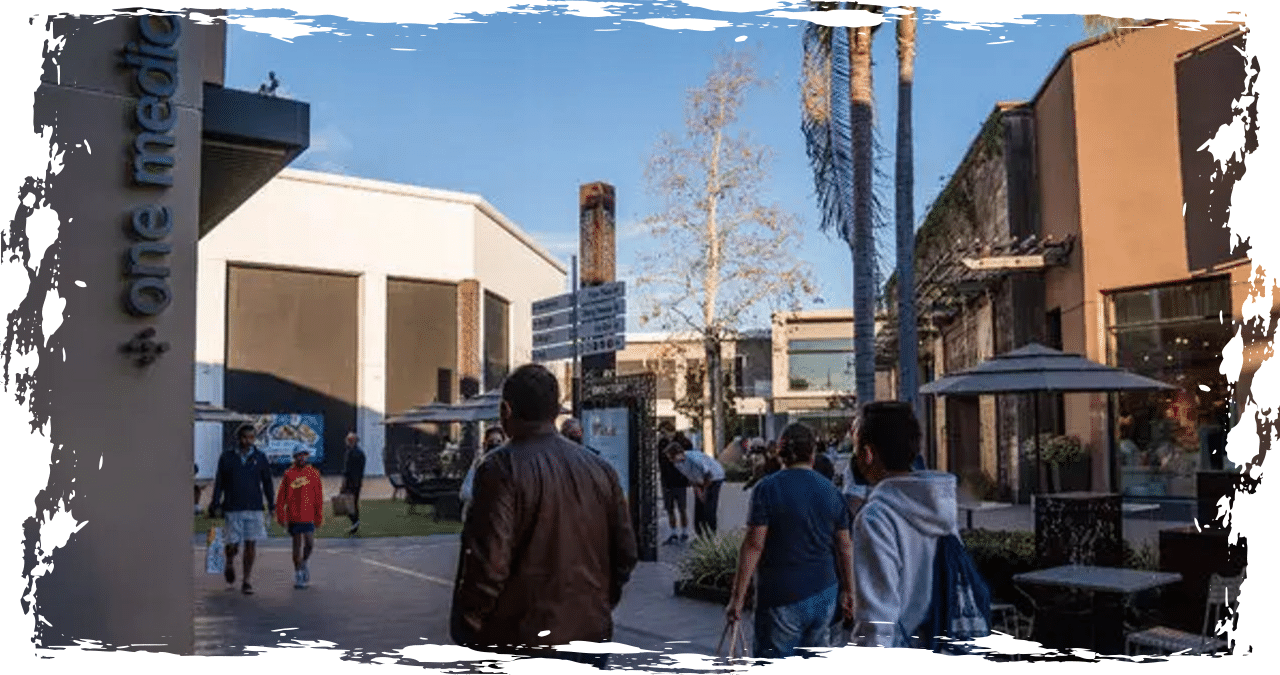Retail space landlords are experiencing an unprecedented situation as demand for their properties has surpassed the supply for the first time in two decades.
In recent times, there has been a significant surge in demand for commercial retail spaces. This comes after a prolonged period of restrained construction and the elimination of underperforming properties. As a result, the retail market has less available space. The remaining properties have taken on tenants that can attract more shoppers and provide them with a reason to stay longer. This has led to an increase in recreational experiences, such as ax throwing and the more recent pickleball, and more dining options. However, this trend has also resulted in a decrease in space for traditional retailers that are not performing well, including bookstores and clothing stores.
Barrie Scardina, the president of Americas retail services, agency leasing, and alliances for Cushman & Wakefield, a renowned real estate firm, stated that due to these actions, there is less redundancy from tenants, and landlords are creating more resilient tenant mixes. He further added that the last 10 years have witnessed some of the most productive occupancy recorded.
According to a recent report by Cushman & Wakefield, the vacancy rate in shopping centers has hit a two-decade low, standing at just 5.4%. This shift has resulted in a change in the balance of power in lease negotiations, with the advantage now resting firmly in the hands of landlords.
Developers are currently in search of distressed and failed properties or locations that would be better suited for retail use due to high demand. Partners Capital, for instance, is leading the charge by transforming a 100,000-square-foot office complex situated near Las Vegas into a $30 million project called the Cliff. The development will feature a range of amenities such as restaurants, boutiques, health-and-wellness operators, entertainment space, and a central bar. According to Bobby Khorshidi, the president of Partners Capital, this marks a significant shift in the company’s strategy. A few years ago, the firm was selling off much of its retail-center portfolio and switching to industrial buildings that housed logistics providers.
The reversal of fortune between office properties and shopping centers is perfectly exemplified by Partners Capital’s recent decision.
According to David Larcher, CEO of Vestar, a developer in Phoenix with plans for multiple projects, including the second phase of Vineyard Towne Center, a 260,000-square-foot shopping center in Queen Creek, Arizona, the pandemic has actually had a positive impact on retail.
According to him, many abandoned spaces were repurposed, while retailers burdened with excessive debt were forced to close shop.
The rebound in the real estate industry, particularly in the shopping center sector, may have been accelerated by the pandemic. However, it’s important to note that this shift has been in the making for over a decade. The financial crisis and subsequent recession in 2009, coupled with the rise of e-commerce, led to a surplus of retail space and an increase in retailer bankruptcies. This prompted many investors to sell or convert shopping centers into offices, apartments, and warehouses. As a result, shopping center space, which had previously experienced a surge from 2006 to 2009, began to shrink in two waves – first from 2009 to 2016 and then again during the pandemic.
Developers are now incorporating apartments, grocery stores, hotels, and offices into their projects. This is being done while also reducing the amount of excess store space.
The 470,000-square-foot center in Arlington, Texas, is slated for a redevelopment project by Trademark Property. The retail space will be reduced by approximately half, and additional office, residential, hotel, and entertainment uses will be added.
He stated confidently that there are enough opportunities to keep their pipeline well stocked for several years to come.
According to industry experts, the revitalization of open-air centers is being led by high-growth markets like Phoenix, Nashville, Tennessee, and Austin, Texas. Cushman’s Scardina further noted that even high-end malls are experiencing low vacancy rates.
In recent years, the retail industry has seen an increase in demand as more people have started to shop in person again. Additionally, many retailers have started using physical stores as distribution points, further boosting demand. Nationally, the average rental rate per square foot was almost 4% higher in the first quarter of this year than it was a year earlier, at nearly $24. Property developers, such as Terry Montesi, founder of Trademark Property in Fort Worth, Texas, have reported that in some cases, landlords are able to raise rates on new leases by more than 30% from the previous lease.
Investor interest is being reignited by the current environment as retail properties, which were out of favor, did not experience the same rise in value as apartments and warehouses over recent years. Consequently, shopping centers can offer a more attractive yield compared to these pricier assets in a time of persistently high interest rates.
According to Montesi, the founder of Trademark in 1992, retail real estate fundamentals are currently at their strongest point in his entire career. He added that although the capital markets haven’t fully embraced retail yet, they are slowly warming up to it.
Despite the current economic boom, there are still a few challenges that could hinder progress. Inflation has caused consumers to become more cautious with their spending, leading to a decrease in discretionary purchases as seen in recent quarterly earnings reports from Walmart and Target. Moreover, both shopping center owners and retailers are grappling with rising interest rates and construction and insurance costs, which have resulted in higher occupancy expenses.
As the retail industry continues to face challenges, investors are closely monitoring struggling retailers. With the recent bankruptcies of apparel stores such as Express and Rue21, and the closure of underperforming locations by major retailers like Macy’s and Walmart, the sector is experiencing significant turbulence.



